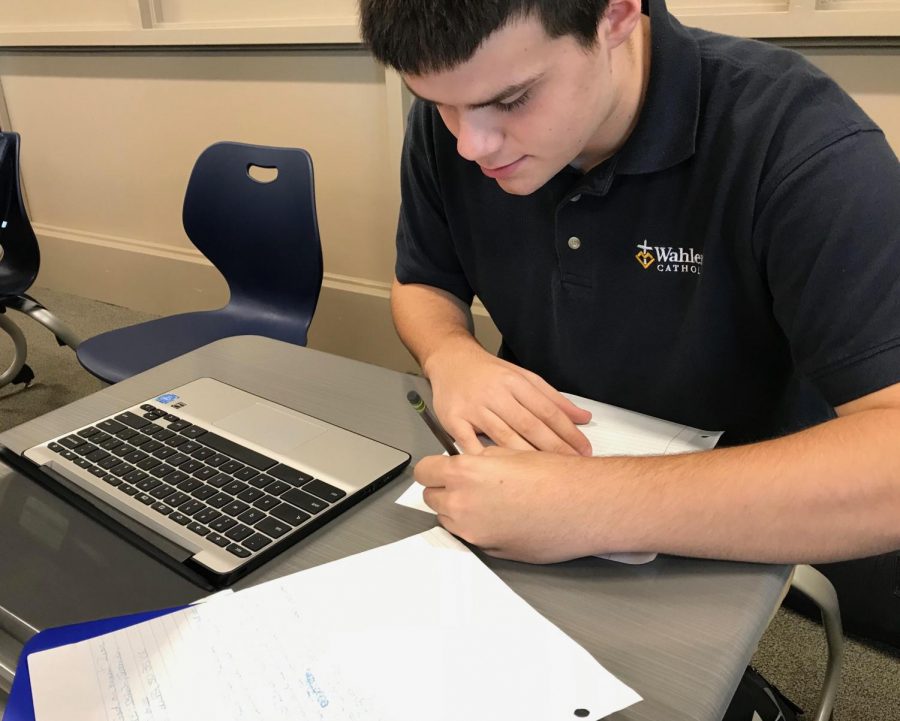Debating cursive handwriting
By Ashley Steele
Of the Gleaner
Across the country, many schools and school systems have released cursive handwriting from their curriculum when others are still continuing to teach their second and third graders the art of cursive handwriting.
Recently the states of Louisiana, Arkansas, Virginia, California, Texas and Florida have all passed laws requiring their students to learn cursive handwriting and practice it through their high school years. However, in the states of New York and Colorado, few schools are currently teaching the looped S’s or the curly T’s. So the question is, should we still be teaching or practicing cursive in our schools?
At Wahlert, most students are used to pulling out their computers from their bags and typing their homework. Some schools are still writing on loose leaf in print or cursive handwriting.
“As a teacher, I prefer to have my students type in my class rather than write. It is easier to read and edit what they are writing,” says Mrs. Cathy Conlon, a ninth grade English and strategies teacher.
Even though Wahlert types more than writes, some students jump on the chance to write when they can, especially in cursive.
“I love writing in cursive handwriting because it is much faster than regular print. Connecting my letters and making every letter flow together is easier than pausing in between each letter,” said Sam Kluesner, ‘20.
Kluesner first learned how to write in cursive in second grade. Since curriculum differs from school to school, some students learn cursive in second grade while others learn it in third grade.
Keeley Carney, ‘20, learned how to write in cursive in third grade.
“I did not like learning cursive because it was hard to have all the letters blend together,” she said. “So since I didn’t like writing in it when I was little, it just isn’t a habit I have,” Carney.
In all, students and teachers at Wahlert have different preferences when it comes to handwriting. It may be because of convenience or because of looks, but cursive is still a part of many schools’ curriculum, and still a part of the world today.

Ashley Steele is a senior at Wahlert, and is an Editor for The Gleaner. Ashley is a dancer for Vibe Dance Co. and on the Wahlert dance team. She is Student...




